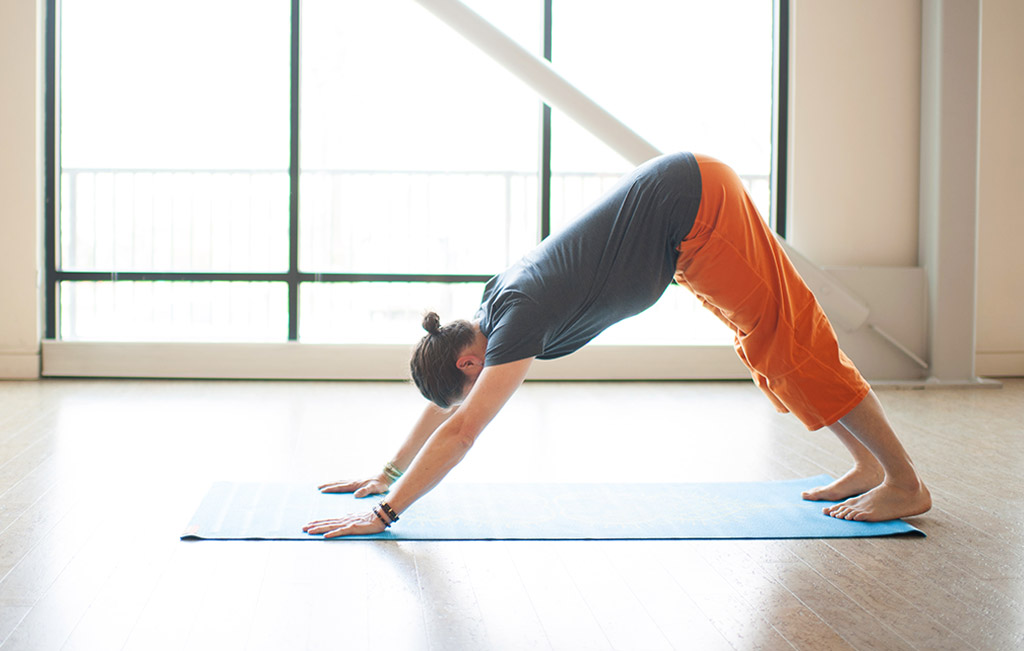
No matter how much we love yoga, it’s natural for our practice to ebb and flow, especially over the long term. Like any long-term relationship, sometimes we’re madly in love with our practice, and at other times it can feel kind of “meh.”
Any time you make a commitment to any sort of practice, there are times of inspiration and excitement, and times when we hit a plateau. If you continue to practice for decades, your practice will likely need to change—multiple times. Sometimes it will be more active, sometimes more relaxed. Sometimes a vigorous early-morning daily practice will be just what you need. At other times, an evening Restorative practice might be what best allows you to meet your life’s daily demands.
Don’t be discouraged if you go through a period of not wanting to practice at all. That doesn’t necessarily mean that your relationship with yoga has ended. It might just mean that you need a break to focus on other things. I’ve always found that I appreciate asana practice even more after I’ve taken a break.
How to Recommit to Yoga Practice
Even though a break might be just the thing, at some point, most of us want to return to our yoga mat sooner or later. But once you get out of the habit, it can be a challenge to make time for practice. How do you recommit to yoga practice once you’ve slowed it down or even stopped? Here are a few suggestions:
- Get back to class: Yoga classes can give you new inspiration and new ways of approaching your practice, which can give you new, exciting reasons to roll out your mat at home. If you haven’t practiced in a while, start slow. Avoid going to the most vigorous or intense class. Your body may need time to adjust. If you go to an intense class and injure yourself, you’ll likely have to take more time off, or you may give up practice altogether. Ease back in.
- Practice first thing in the morning: As a definite anti-morning person, I know it can be hard to commit to setting your alarm an extra 30 to 60 minutes earlier. But for most of us, the reality of our lives is that once the day gets going, we’re much less likely to find time to practice. Mornings, when others in the household aren’t up yet, will likely provide the most unconflicted practice time. Even if you can only practice five minutes, give yourself entirely to your practice during that time.
- Take a workshop: Yoga workshops are a great way to bring new perspective to your practice. In a workshop, you have the opportunity to immerse yourself for a day or two, and in most cases, move deeply into a particular subject. This can spark all kinds of inspiration for your daily practice.
- Delve into yoga philosophy: There’s more to yoga than poses. Look into the other aspects of yoga. Chapter Two of the Yoga Sutras provides information on the Eight LImbs of Yoga, the framework for yoga as a life practice. Find a study buddy, a philosophy class, or read several translations and interpretations of the sutras on your own. Then see how you can apply just one of the principles to your asana practice and your life. For example, if you choose ahimsa (non-harming), how can you practice yoga with the intention to nurture, rather than conquer your body?
- When it feels “meh,” do it anyway, and look deeper: Boredom comes from not paying close attention. When we get bored with our practice, it’s usually because we’ve begun to assume that when we do the 1,000th Triangle Pose or Dog Pose, it’s the same as all the previous ones. The truth is, each time we practice, it is the first time we have practiced this particular pose. Each time we practice, we bring with us a different head space, different experiences and even a different body. Staying attentive to what is actually happening inside your body, rather than judging the appearance of your asana or assuming it’s the same as all that came before, engages your mind, which helps dissipate boredom.
